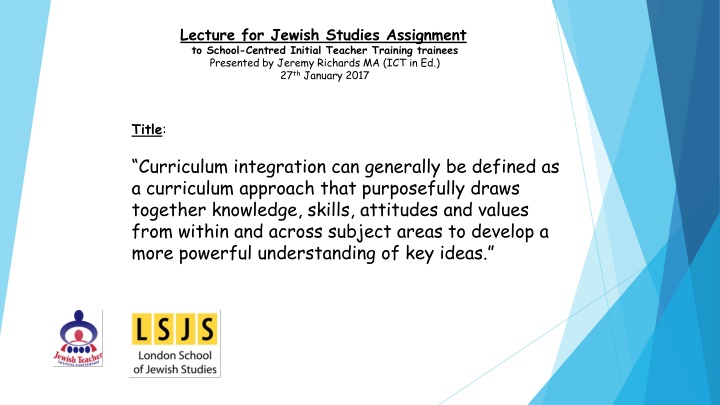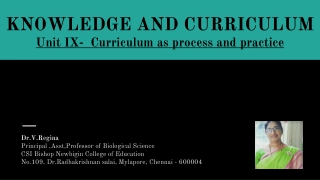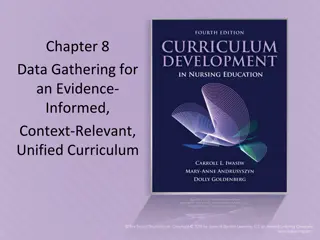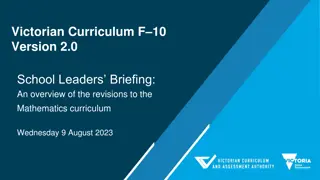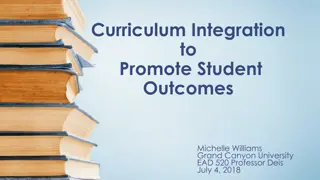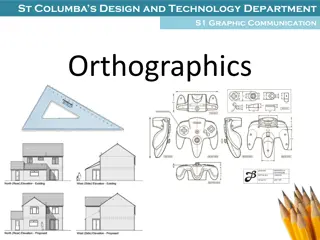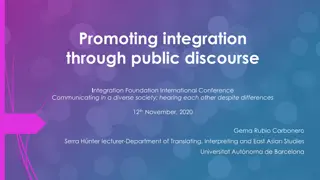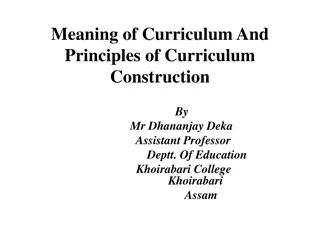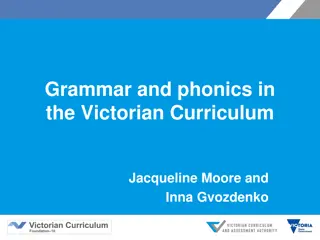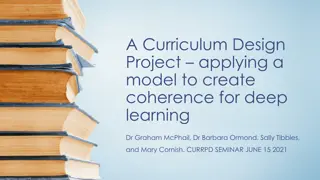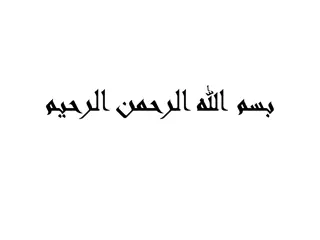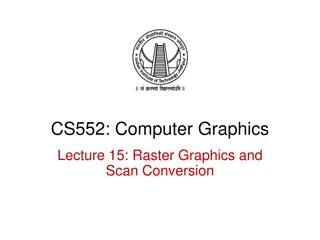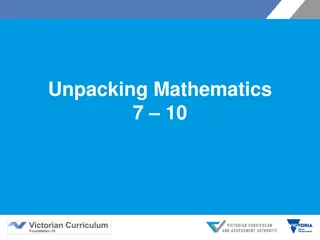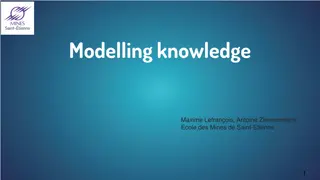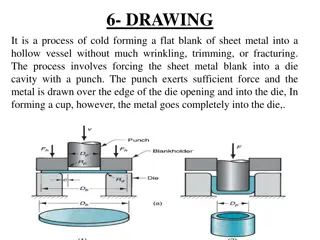Curriculum Integration: Drawing Together Knowledge and Skills
Curriculum integration purposefully combines knowledge, skills, attitudes, and values across subject areas to enhance understanding. This approach fosters a more cohesive educational experience that enables students to make connections and see the interconnectedness of various concepts, ultimately leading to a deeper grasp of key ideas in diverse fields such as Jewish education.
Download Presentation

Please find below an Image/Link to download the presentation.
The content on the website is provided AS IS for your information and personal use only. It may not be sold, licensed, or shared on other websites without obtaining consent from the author.If you encounter any issues during the download, it is possible that the publisher has removed the file from their server.
You are allowed to download the files provided on this website for personal or commercial use, subject to the condition that they are used lawfully. All files are the property of their respective owners.
The content on the website is provided AS IS for your information and personal use only. It may not be sold, licensed, or shared on other websites without obtaining consent from the author.
E N D
Presentation Transcript
Lecture for Jewish Studies Assignment to School-Centred Initial Teacher Training trainees Presented by Jeremy Richards MA (ICT in Ed.) 27th January 2017 Title: Curriculum integration can generally be defined as a curriculum approach that purposefully draws together knowledge, skills, attitudes and values from within and across subject areas to develop a more powerful understanding of key ideas.
To the young mind everything is individual, stands by itself. By and by it finds how to join two things and see in them one nature, then three, then three thousand; and so, tyrannized over by its own unifying instinct, it goes on tying things together, diminishing anomalies, discovering roots running under ground, whereby contrary and remote things cohere and flower out from one stem.
It presently learns that since the dawn of history there has been a constant accumulation and classifying of facts. But what is classification but the perceiving that these objects are not chaotic and are not foreign, but have a law which is also a law of the human mind? The astronomer discovers that geometry, a pure abstraction of the human mind, is the measure of planetary motion. The chemist finds proportions and intelligible method throughout matter; and science in nothing but the finding of analogy, identity, in the most remote parts.
The ambitious soul sits down before each refractory fact; one after another, reduces all strange constitutions, all new powers, to their class and their law, and goes on for ever to animate the last fiber of organization, the outskirts of nature, by insight. Ralph Waldo Emerson (1803 82) http://www.bartleby.com/268/8/33.html
Recommended Reading for Assignment *Beane, J. A., (1997). education. New York and London: Teachers College, Columbia University. Curriculum Integration: designing the core of democratic *Fogarty, R.,( 2009). How to integrate the curricula. 3rd ed. California: Corwin. *Bieler, J., (1986) Integration of Judaic and General Studies in the Modern Orthodox Day School. Jewish Education 54, 4 (1986), pp. 15-26. [online]. Available at www.lookstein.org/integration/bieler.htm#_ednref35. *Malkus M (2011) Coherence, in Miller H, Grant L.D., Pomson A, (2011) The International Handbook of Jewish Education, Dordrecht Heidelberg London New York: Springer Curriculum Integration in Jewish Day Schools: The Search for * Pomson, A (2001) Knowledge that Doesn't Just Sit There: Considering a Reconception of the Curriculum Integration of Jewish and General Studies", Religious Education 96:4 (Fall, 2001), 530-32
More Recommended Reading for Assignment *Sterling Epstein, S., (1991) . Integrated and Interdisciplinary Education. BeYachad Bringing Together Best Educational Practices and Jewish Education. Philadelphia: BeYachad *Valins, Oliver (2001) JPR The Future of Jewish Schooling *Zeldin, M., (1998). Robert Tomberg (ed.), 1998. The Jewish Educational Leader's Handbook. Denver: A.R.E., pp. 579 590. Integration and Interaction in the Jewish Day School. In: *Greenberg, I (2012) The Jewish Way: Living the Holidays * education.alberta.ca/media/656618/curr.pdf Primary Programs Framework For Teaching and Learning * www.lookstein.org/integration/curriculum_intro.htm Good curriculum Integration Site
INTEGRATION OF JUDAIC AND GENERAL STUDIES IN THE MODERN ORTHODOX DAY SCHOOL Jack Bieler I. Compartmentalization Harold S. Himmelfarb writes, "Recent observers have commented on the tendency of modern Orthodox Jews to compartmentalize the religious and secular components of their lives. It is quite possible that this tendency is fostered by the organization of the day school curriculum
What might these analyses of "compartmentalization," "modern Orthodoxy," and their interrelationship suggest in terms of the direction of educational policy in modern Orthodox day schools?
Many Orthodox Jews in America, who, according to Gittelson, can be identified among the country s leading "scientists, film stars, journalists, television executives, doctors, lawyers, university professors, and real estate tycoons engage in compartmentalization comparable to that of the Brahmins described by Singer. Rather than residing in one continuous world, they see themselves as participating in multiple environments, constantly alternating between one and the other
II. Parallels between the Day School and Compartmentalization In most of these schools, instructional time is divided into two distinct segments, where part of the day is devoted to Judaic studies and the other to secular disciplines. There are some schools that opt for a departmental approach where a class in Talmud can follow one in mathematics and be followed by another in English literature. But within both organizational schemes, a secular discipline rarely impinges upon or overlaps aspects of the Judaic course of studies and vice versa.
The student is exposed to different outlooks, ideas, and ways of thinking as he goes from morning to afternoon, or from class to class. Adult role models are usually clearly identified with either Judaic or general studies, but rarely with both. Extracurricular activities generally reflect the religious or secular orientations of those who organize and conduct them. The day school can therefore be understood to have prepared its graduates to continue compartmentalization during their university studies and well beyond, into their adult lives.
III. Rationale and Motivation Ideologically, compartmentalization on the part of Orthodox Jews is rationalized by applying the categories of Kodesh and Chol to the domains of ritual and belief on the one hand, and worldly activities on the other
The Havdalah of Motzei Shabbat that divides the sanctity of the previous 25 hours from the secular quality of the ensuing work week serves as a paradigm for keeping religious considerations distinct from business, social, professional, and academic interests.
Furthermore, the degree of specialization in all aspects of life demanded by the technological sophistication of modern society also promotes the tendency to view religion as yet another specialty among an individual's multiple activities.
A religious orthodoxy that makes all-encompassing demands upon its faithful is particularly susceptible to being rejected in favor of a more liberal or even irreligious position that allows the individual increased personal freedom and easier acceptance by general society. The alternative to such extensive soul-searching is compartmentalization, which presents the opportunity for the religiously Orthodox to feel that he has not compromised his traditional theological standards, while at the same time he can fully participate in the world around him.
IV. Another Model of Compartmentalization According to Heilman, however, compartmentalization often not only entails separation, but also devaluation of at least one of the elements being kept apart from the other. Either certain aspects of religion will be accorded less importance, or features of modern life and thought will be ignored. Devaluation is necessitated because of the porousness of modern society in which its diverse elements "leak" from one domain to another via the media, social contacts, and professional responsibilities.
In the case of Orthodox Jews, the daily newspaper introduces into the home advertisements that promote the materialism of general society; being invited to a business associate's home for dinner may create numerous Kashrus dilemmas; the scheduling of a professional conference on Shabbat gives rise to another set of conflicts for the observant Jewish participant.
in order for him to maintain the delicate balance between his religious and secular pursuits, the discordant matters are either made peripheral, inattended; or they are actively repressed and forgotten, disattended . As a result, some religious individuals approach modernity in purely instrumental terms. For example, the orthodox religionist may take advantage of financial opportunities, advanced and affordable medical treatment, and even technological developments that allow for wide dissemination of religious thought and learning.
Yet he will make sure to avoid serious consideration of the implications of modern thought vis- -vis his religious beliefs. Secular education will be tolerated only as a vocational stepping-stone, rather than viewed as a possible forum wherein the student's understanding of how the elements in the divinely created universe function and interact with one another.
On the other hand, there are those for whom secularism and participation in the modern world are considered the "paramount reality," rather than the commitment to religious thought and practice. While unwilling to reject outright their spiritual traditions, these individuals will often make sure to confine their religiosity to familiarity and conformity with the law. Activities that would allow religion to react as a more central focus in their lives, such as the careful and reflective study of traditional texts in order to better clarify the fundamentals of one's belief, are assiduously avoided. D. Singer asserts that such people, albeit nominally identifying with Orthodoxy, are in fact "religiously observant secularists" who may be "meticulously observant of the law, but (whose) values and attitudes are shaped by the surrounding secular culture.
V. Devaluation in the Day School Just as structural compartmentalization can be observed in the typical Orthodox day school, so attitudinal devaluation of either Judaic or general studies is also in evidence. Answers to the following questions can provide a profile of what a particular school to values and devalues in terms of its dual curricular educational program:
1. Is the ideal graduate in the eyes of the administration, faculty and student body, one who continues to study Torah in a Jewish institution, or one who enrolls in a secular university, or both? 2. How many classroom hours are devoted to Judaic as compared to general studies?
3. When classes have to be canceled in order to allow for extracurricular activities to take place, which subjects are protected, and which subjects is the school prepared to regularly forgo? 4. Is the professional preparation and education of the Limudei Kodesh staff comparable in quality and breadth to that of those teaching Limudei Chol and vice versa?
5. Do the teachers communicate to their students proper respect for the disciplines of the department in which they do not teach? 6. Are the grades in all subjects in terms of school awards and acceptances to institutions of higher learning treated with equal significance?
7. Are aspects of traditional Halachic practice- overlooked in favor of taking part in secular activities, e.g., standards on school trips, the type of plays chosen for student performance, or the attire of a school athletic team? Unbalanced approaches to issues such as the distribution of classroom hours, the type of professional training required, for employment, and the importance of evaluations of student classroom performance, contribute to the development of an outlook that might lead to devaluation of either the Jewish or secular worlds, both during and subsequent to a student's school career.
VI. Modern Orthodoxy, Compartmentalization, and Devaluation The modern Orthodox Jew is expected to not only externally conform to traditional religiosity, but also to have intemalized the values and attitudes associated with orthodoxy. His "modernity" manifests itself in his willingness to participate in modern society rather than in an uncritical acceptance of contemporary values.
if educational strategies were to be developed that would mitigate against compartmentalization and devaluation, and instead promote integration of the diverse elements comprising the students' immediate world perhaps the modern Orthodox adult culture could also be positively affected.
it is wishful thinking on the part of modern Orthodox educators to assume that their students will integrate rather than compartmentalize and devaluate the "materials," i.e., either the Judaic or general studies aspects of their educations. The sophisticated and complex task of integrating Jewish and secular studies and lifestyles should hardly be left to the average day school student to undertake on his own.
If the integration of Jewish learning and culture with the best aspects of Western civilization is to be more than an educational slogan designed to convince parents to provide their children with a day school education, then the school itself must actively and consciously design integrated curricular and extracurricular activities on behalf of its student body.
A theoretical scheme of integration that is appropriate to the background, aspirations, and religious orientation of the constituency served by the modern Orthodox day school must be arrived at and then translated into a meaningful educational program. and you read the rest..... http://www.lookstein.org/integration/bieler.htm#_ednref35
Digest of Literature on Curriculum Integration Stan Peerless The integration of Jewish and general studies has been identified as a common goal of many Jewish day schools, particularly those in the Modern Orthodox and non-Orthodox movements (Pomson, 1996; Solomon, 1984). Yet, researchers of Modern Orthodox, Conservative, and Reform Jewish education have all indicated that integration efforts in the day schools affiliated with these movements have generally been a source of disappointment (Bieler, 1986; Lukinsky, 1978; Zeldin, 1992).
Pomson claims that the failure of integration programs often relates to the complexity of the subject matter, the backgrounds of the teachers, the perspectives of the students, and/or the prevailing values of the community.
Why Integrate ? Jewish educators are motivated to foster curriculum integration for both academic and ideological reasons. Such integration offers several potential academic benefits: 1) Curriculum integration fosters the ongoing reinforcement of skills and information learned in one area of study when utilized in another area. 2) Curriculum integration provides students a richer academic experience by broadening the context and applicability of information and skills that are learned.
3) Curriculum integration maximizes the utilization of learning time by borrowing from one area to support another. This is particularly important in Jewish day schools where educators face time pressures in all curricular areas. On an ideological level, curriculum integration helps to create holistic students who are able to see the relevance of their Judaism in all areas of their lives. This prevents compartmentalization in which students separate between the religious and secular aspects of their lives. Such separation can lead to competition between the two worlds, with the Jewish component often losing out.
What Is Integration ? We might find valuable insights into the issue of curriculum integration in the literature in general education. A common misconception among Jewish educators is that curriculum integration by definition involves interdisciplinary study. Fogarty (1991) identifies ten models of integration that fall into three general categories:
1) integration within single disciplines 2) integration across several disciplines 3) integration within and across learners. She defines the goal of integration as follows: to help young minds discover roots running underground whereby contrary and remote things cohere and flower out from one stem. (p. 61)
As such, integration represents a way of thinking rather than simply an overlapping of curriculum. Perkins and Salomon (1984) utilize the term transfer to describe this way of thinking. They distinguish between learning and transfer . "Learning" is characterized by the ability of the student to demonstrate performance in a context that is more or less the same as the learning situation. Transfer takes place when the student is able to apply knowledge acquired to different situations.
The following three exercises represent different levels of learning and transfer for children who are learning multiplication tables in the study of mathematics: 1) 6 x 8 = 2) If an apple costs 8 cents, how much would it cost to buy 6 apples ? 3) How far would a car travelling 60 miles per hour travel in 8 hours
The child who can only answer the first question has learned the material, but has not demonstrated transfer. The student who is able to answer the second question demonstrates a certain level of transfer. Mastery of the third question reflects an even greater degree of transfer.
As this example illustrates, the levels of transfer achieved in given learning situations can vary. Perkins and Saloman (1984) have identified two typologies of transfer, low road transfer and high road transfer . Low road transfer involves spontaneous, automatic transfer of highly practised skills with little need for reflective thinking. High road transfer involves an explicit formulation of abstraction in one situation that enables making a connection to another context.
With this model in mind, we can better understand Fogarty's assertion that integration can take place within one discipline. For example, Talmud study by itself provides an excellent opportunity for promoting high road transfer. The Gemara often gives the student a dispute in a legal case and then tries to abstract the principle behind the dispute. Theories are tested by application to other cases. Similarly, in geography, the student may be encouraged to apply concepts from the study of the development of a city in ancient times to the study of a more modern city.
Conversely, our understanding of the concept of transfer can also help to explain the failure of many attempts at interdisciplinary integration. Simply reading The Giving Tree or studying a science unit on trees in conjunction with Tu Bishvat does not ensure that high road transfer takes place. As Brophy and Alleman (1991) assert, An activity is appropriate because it promotes progress toward significant educational goals, not merely because it cuts across subject-matter lines. (p. 66)
Can Integration Be Taught ? According to Perkins and Salomon (1984), teachers can foster or hinder transfer in their instruction. A focus on content oriented questions and analysis tends to thwart the process of transfer. Transfer, however, can be encouraged through processes that the authors (1988) refer to as hugging and bridging .
Hugging is a method of fostering low road transfer. In hugging, teachers present material in a manner that creates resemblance conditions leading to a similarity of context. Thus, if teachers wants students to transfer concepts learned in biology to ecology, they will frame the ecology lesson in a way that accents the contextual similarity.
Bridging is a technique that encourages high road transfer. In bridging, the teacher mediates the desired processes of abstraction and connection making. For example, a social studies teacher might ask students what factors provoked World War I and where such factors are now operating in the world. Perkins and Salomon (1988) contend that these methods can do much to foster transfer in the instructional setting when used persistently and systematically.
Is Interdisciplinary Integration Desirable ? There are those who question whether it is, in fact, advisable to engage in interdisciplinary integration in our schools. From a Jewish perspective, we find a hesitancy, even among those who advocate the concept of Torah Umada, the integration of Torah and general studies.
In his address to alumni of Yeshiva University on the school's fiftieth anniversary, Dr. Norman Lamm, president of the university, quoted his predecessor, Dr. Samuel Belkin: Our job is to give the students the material; their job is to let the materials interact within their minds. Apparently, the bastion of the Torah Umada philosophy advocates a student-based integration facilitated by the presentation of parallel tracks without mediation.
Interestingly, Howard Gardner has also expressed reservations about interdisciplinary instruction (Gardner, 1999): To use the word interdisciplinary, one must show that particular disciplines have been mastered and appropriately joined. Such interdisciplinary synthesis is simply not feasible for most youngsters during the middle years of childhood, or for most of their teachers.
While Gardner does not negate that interdisciplinary curricula may have some other value, he does assert that, at least prior to high school, they do not promote interdisciplinary thinking, and may in fact ultimately hamper such thinking by weakening mastery of specific disciplines.
Gardner states a further reservation regarding the inability of many teachers to actually facilitate interdisciplinary study.
